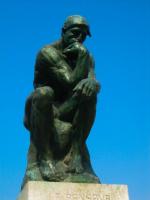Donatello: 10 masterpieces to meet the Renaissance sculptor
Donatello was a sculptor, goldsmith, and designer of the Italian Quattrocento, considered by some to be the father of Renaissance sculpture. Famous for his complete detachment from money and his selfless dedication to his craft, Donatello opened up new technical and aesthetic possibilities in the sculpture of his time.
This artist created and developed the relief technique stiacciato, which allows a certain sense of perspective and depth. He also incorporated psychological traits into the sculpture, which allowed him to discover the hidden beauty in the "ugly" or "grotesque."
To understand the universal value of his style, it is convenient that we know the most important works of Donatello, as well as his life, characteristics and outstanding contributions of him.
1. David del Bargello, 1440

David del Bargello It is one of Donatello's most famous works, if not the most. It is a round sculpture carved in bronze. His fame grew rapidly, as this piece is the first full-length sculptural nude since Classical Antiquity.
The sculpture represents King David after defeating the giant Goliath. David was a highly valued figure in the Renaissance. It was interpreted as a symbol of the triumph of reason over brute force.
We see a young adolescent who has triumphed with his small body over a giant, in a position of counterpost. With this Donatello has recovered a sculptural model typical of classical antiquity. We also appreciate the application of the plastic values developed in the Renaissance: sobriety, balance, proportion and symmetry. Naturalism has been imposed in artistic work after a study of human anatomy.
2. Equestrian monument to the condottiero Gattamelata, 1453

The equestrian monument to the condottiero Gattamelata It was a very influential sculpture in its time for being one of the first of its kind since Ancient Rome. Not only did it return to the equestrian motif, which had fallen into disuse, but it was conceived as an independent piece of any architectural ensemble, which was not used either.
It was dedicated to Erasmus of Narni, better known as Gattamelata, condottiero of the Most Serene Republic of Venice. Some argue that it was inspired by the equestrian statue of Marcus Aurelius in Rome. Others maintain that he was inspired by the Triumphal Quadriga or Horses of San Marcos, in Venice.
3. Saint John the Evangelist, 1409-1411

Saint John the Evangelist It is a sculpture made of marble, originally intended for the facade of the Duomo in Florence. In this work the late Gothic mannerism of Donatello is expressed.
The saint is represented as a bearded man, seated, with arched shoulders as if tracing a semicircle, clothing with marked chiaroscuro effects, and large and expressive hands. In one of his hands he holds a book that alludes to the Holy Gospel.
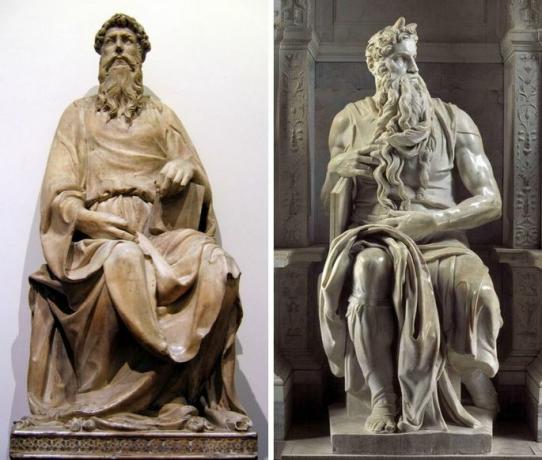
Its impact was such that the work served as inspiration and model for the famous sculpture Mosesby Miguel Ángel Buonarroti. Looking side by side, we can notice Donatello's influence on Renaissance sculpture.
You may also like: Michelangelo's Moses sculpture: analysis and characteristics.
4. Saint Mark (1411-1413) and Saint George (1415-1418)
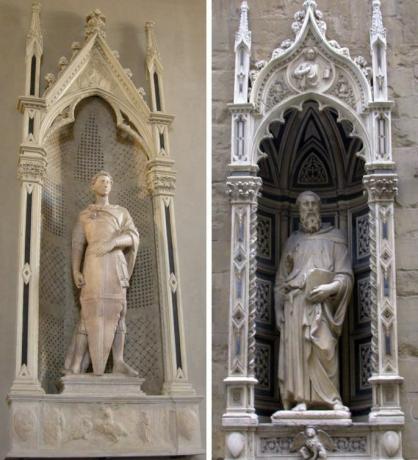
Right: San Marcos, 1411-1413, marble, 248 cm, Orsanmichele Church Museum, Firenze.
Donatello was commissioned to make two sculptures for the niches on the facade of the Orsanmichele church in Florence. The sculpture San Marcos It was commissioned by the weavers and street vendors guild Arte dei Linaiuoli e Rigattieri. The sculpture Saint GeorgeHowever, it is the most famous of the two.
Commissioned by the Arte dei Corazzai gunsmiths' guild, the work Saint Jorge It stands out both for its classical Renaissance humanism and for the base of the niche, in which the sculptor executes a relief with the features of his particular technique. It was moved to the Bargello Museum and replaced by a replica in its original location.
5. Herod's Feast, 1423-1427

Herod's Feast is a gilt bronze relief where Donatello shows off his impeccable handling of the technique of stiacciato. The relief was destined for the baptismal font of the Baptistery of Siena, in which other artists also participated. Donatello was given the scene in which, after Salome's request to King Herod, the head of John the Baptist is presented on a tray. This was Donatello's first job for a city other than Florence.
6. Cantoria, 1438
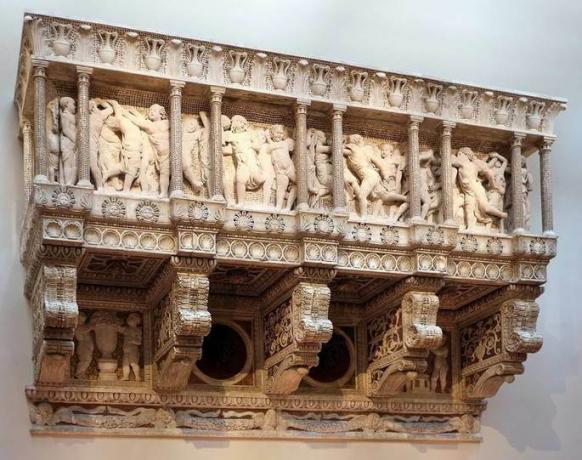
The cantoria It is a balcony or choir that was destined to the Cathedral of Santa Maria del Fiore, in Florence. It is considered a masterpiece of the Renaissance. Among other reasons, this is due to the striking contrast between the rigorous geometry of the volumes of columns and frames, in dialogue with the naturalistic dynamism of the figures of dancing winged children (putti).
7. Penitent Mary Magdalene, 1455

Penitent mary magdalene It is a round sculpture in polychrome wood. The sculpture was inspired by the Golden legend by Jacopo della Vorágine, as was customary. It not only contrasts with the imagery of a young and sensualized, yet mystical Magdalena, but challenge the ideal of classical beauty and discover hidden beauty in what would be considered "grotesque".
We see the aged and emaciated body of Mary of Magdala, an expression of the soul that wishes to live on Love itself, of the soul that despises human laws, including those of beauty. The character is an expression of detachment from matter and vanity (perhaps like Donatello). The sculptor wants us to look at how much Maria loved. Mary loved like this: down to the bone.
8. The Annunciation, 1435

The annunciation It is a sandstone relief, with polychrome sections and gold appliques, destined for the Cavalcanti chapel in Santa Croce, Florence. Noted for its sharp naturalism. Apparently, he has not undergone interventions in time. Giorgio Vasari says that this was the first work that gave Donatello notoriety. However, according to experts, it is possible that Vasari was mistaken for the Crucifix of the Santa Croce, since by 1435, Donatello was a consolidated artist.
9. Altar of the Saint, 1446-1453

The Altar of the Saint It is a set for the altar of the Basilica of Santo Antonio in Padua. Of its original structure, only the following are preserved:
- seven round stone sculptures;
- four flattened bronze reliefs representing the miracles of Saint Anthony;
- a series of reliefs with the symbols of the gospel and
- a relief of the dead Christ supported by two cupids.
The bronze reliefs stand out in particular, in which Donatello achieves absolute mastery in the development of the flattened relief technique.
The complex was modified several times until, in the 19th century, it was rebuilt by Camilo Boito, not without arousing controversy over what could have been the original disposition of the set.
10. Crucifix of the Santa Croce, 1406-1408
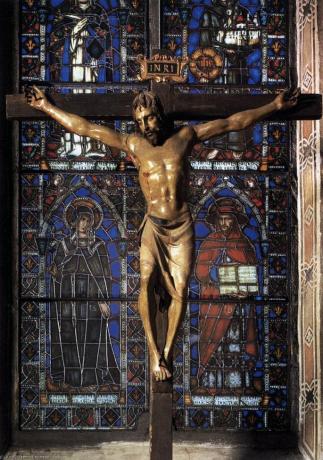
This is one of Donatello's first famous works, commissioned for the Franciscan order. It is a piece of polychrome wood, whose measurements are 168 x 173 cm.
According to Giorgio Vasari, Donatello asked Brunelleschi for his opinion, who would have criticized him for representing Christ as a peasant. Donatello would challenge him to do better, after which Brunelleschi would have made the Santa Maria Novella Crucifix. However, historians do not give credit to this account, since some studies reveal many years of difference between one piece and the other.
Donatello Characteristics

The set of pieces that we have observed allows us to capture a series of characteristics of the sculptor and goldsmith Donatello. Let's highlight the most important ones.
Late Gothic Mannerism
In his early stage, Donatello brought into play elements of the Gothic artistic tradition, such as the postures of the holy characters, with elements typical of the Renaissance, such as naturalism and the development of individualized. The style of this early stage has been described as a "late Gothic mannerism."
Classicism
After assiduously studying the art of Classical Antiquity, Donatello took the cultural program of the Renaissance into sculpture, which specifically involved:
- high development of naturalism,
- symmetry, balance and proportion,
- anthropocentric character.
Expressive and dramatic character
Another characteristic of Donatello was the development of an expressive style based on psychological introspection. Thanks to this, the sculptor had the ability to create empathy between the viewer and the portrayed character.
It may interest you: Renaissance: what is it, characteristics and most important works.
Donatello's contributions
Among the most outstanding contributions of Donatello to the sculpture of the Renaissance we can mention the following.
Creation of relief stiacciato
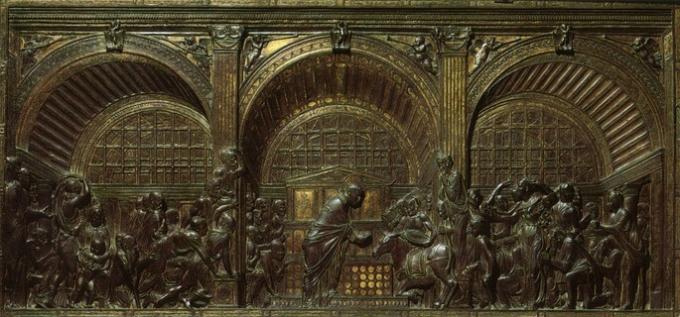
Donatello's most obvious contribution was the invention and development of a technique known as stiacciato or schiacciato. The stiacciato it is a flattened relief. It consists of modeling the surface to be intervened, either in bronze or stone, with very small variations with respect to the background. Contrary to what one might think, this technique allows to obtain a more perfect illusion of depth. Donatello's technique became a resource to be imitated in subsequent generations.
Psychological introspection in sculpture

Donatello was the forerunner of a new way of treating sculpture on the expressive level. He was in charge of delving into the psychology of the characters. He not only gave them individuality, a typical Renaissance trait, but also delved into the psychological character of the represented, anticipating what Rafael Sanzio would do in painting years later.
See also: Rafael Sanzio: biography, contributions and works of the Renaissance genius.
Tendency to ugliness
In his last years, Donatello's expressive style gave rise to an increasingly free art. His sculptures did not focus only on the ideal of classical Apollonian beauty, as was typical of the Renaissance, but he knew how to find beauty in ugliness or the grotesque. An example of this is the Penitent Mary Magdalene.
Perhaps we can see this aspect as a profound development of his interest in psychological introspection. We wanted to point it out in a different way because this "expressionism" of Donatello seems to anticipate or anticipate the paths of contemporary sculpture.
Biography of Donatello

Donato di Niccolo di Betto Bardi, better known by the Italian diminutive Donatello, was born in the city of Florence around the year 1386.
His father was called Niccolò di Betto Bardi, a wool carder by trade. He was known for his restless nature, to the point of participating in more than one uprising in Florence. His father contrasted with his son's, marked rather by artistic and intellectual curiosity.
The family did not have the financial resources, but Donatello's early displays of talent and discipline earned him the sympathy of Ruberto Martelli. It was for this reason that he grew up in his house under his protection.
An introduction to the Florentine way
In 15th century Florence it was customary for aspiring sculptors to begin their training in goldsmithing. Donatello, following custom, is believed to have started this way.
One of his early teachers was the great Renaissance sculptor, Lorenzo Ghiberti, with whom he collaborated on various works.
Rome and the "treasure hunters"
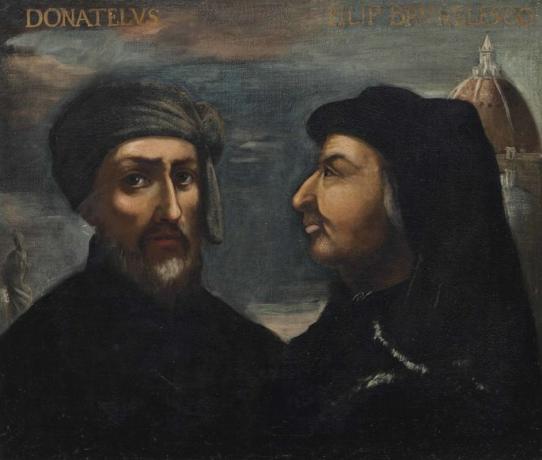
In 1401, a competition was called to design the doors of the Baptistery of San Juan in Florence. The candidates included Donatello, Brunelleschi and Ghiberti, who was the winner.
Disillusioned, Brunelleschi decided to go to Rome to study the classical art of the late Roman Empire, the vestiges of which were explored with renewed interest. Donatello, committed to his intellectual training and the perfecting of his craft, went to Rome with the Florentine master, where he remained between 1402 and 1404. The feat earned them both the epithet "treasure hunters."
In 1404, Donatello returned to Florence and joined Ghiberti's workshop again, where he ended up collaborating in the realization of the north door of the Baptistery of San Juan.
A society for the love of art
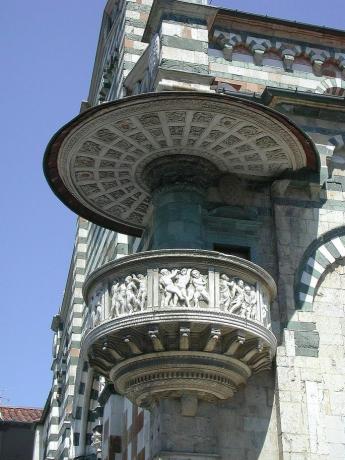
Between 1425 and 1438, Donatello established a partnership with Michelozzo di Bartolomeo, a Florentine architect and sculptor, also a disciple of Ghiberti.
Together they carried out many works, such as the outer pulpit of the Prato Cathedral. During this period, Donatello delegated economic affairs to his partner, one more element that confirmed not only the sculptor's disinterest in money, but also his absolute dedication to art.
Padua, between maturity and freedom
Between 1443 and 1453, Donatello settled in the Venetian city of Padua. His work reaches greater maturity, while acquiring a renewed freedom.
In this period he elaborates some of the best known works of him. For example, the equestrian monument to the condottiero Gattamelata, of Greco-Latin inspiration. We can also refer to the reliefs and sculptures for the altar of the Basilica of San Antonio de Padua and the almost expressionist sculpture of Penitent mary magdalene.
Poverty, death and grave of Donatello
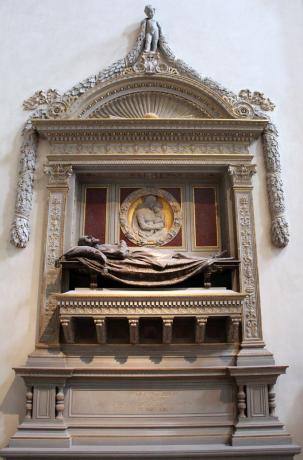
The anecdote circulates that, while Donatello was still in full artistic vigor, he put a basket of money within the reach of his assistants so that they would dispose of it at will. If this is true, it can be understood how such a highly valued artist spent the last years of his life in a tight financial situation.
Added to this, a disabling illness kept him in bed until his death. Donatello passed away in his hometown, Florence, on December 13, 1466, at the age of 80.
The artist who was born humble, died humble, but enriched the world with one of the greatest and inexhaustible treasures: beauty. Donatello's body rests in the Basilica of San Lorenzo.

